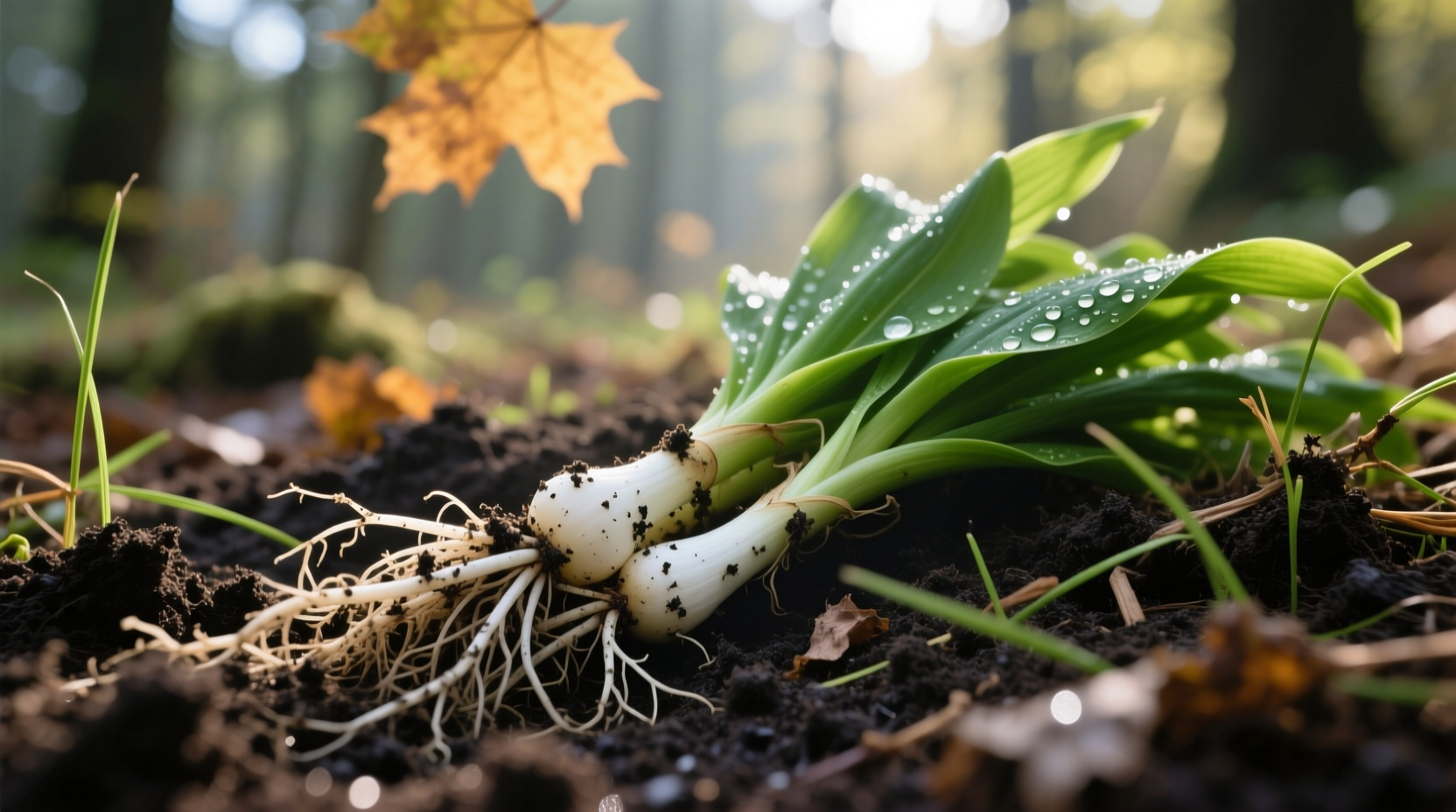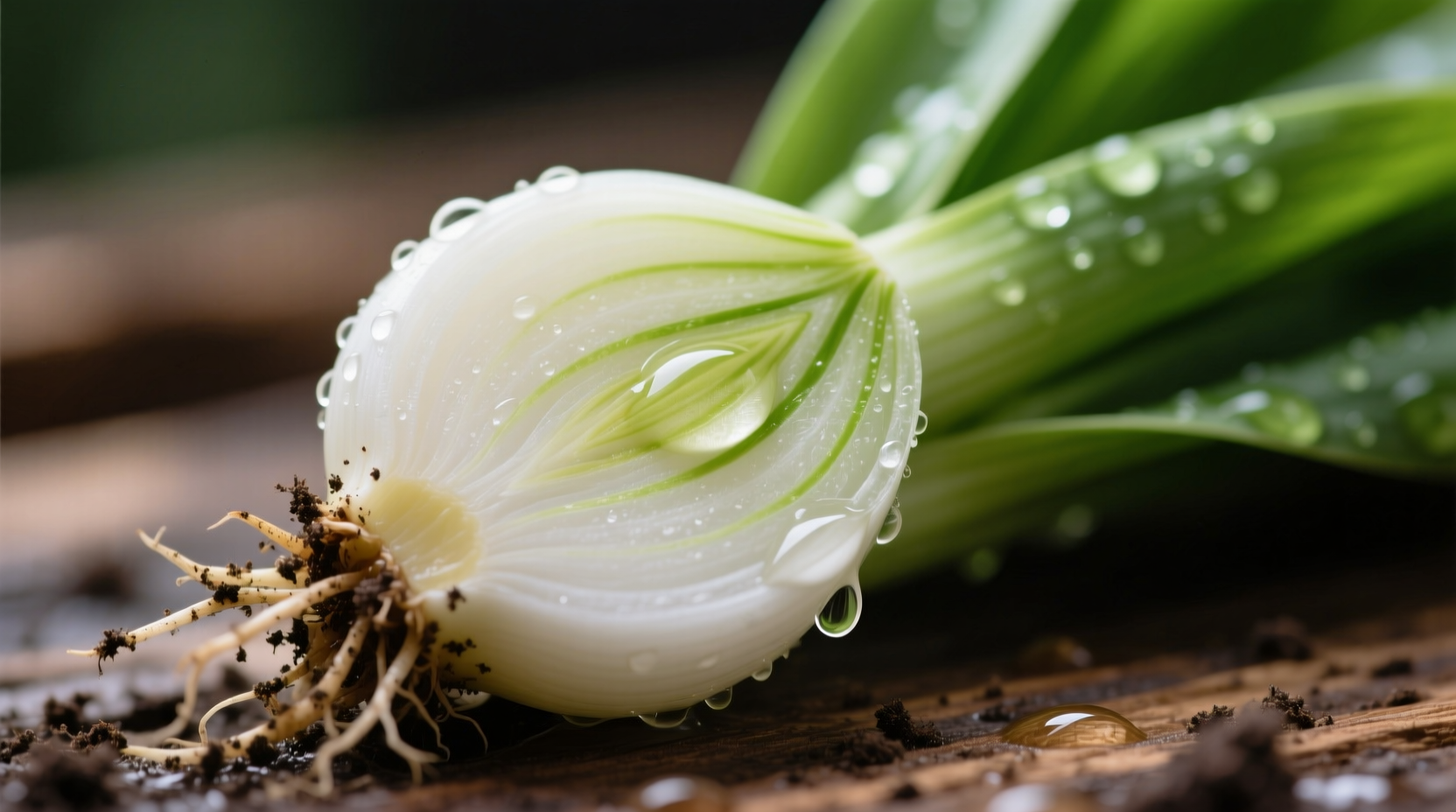Unlocking the Unique Flavor Profile of Ramps
If you've ever wondered what do ramps taste like, you're in for a culinary revelation. These wild spring delicacies offer a flavor experience unlike any common grocery store ingredient. As a chef who's worked with ramps across Michelin-starred kitchens and humble farm-to-table establishments, I can tell you their taste profile is what makes them so prized by food enthusiasts.
Breaking Down Ramp Flavor Components
Ramps (Allium tricoccum) contain distinctive flavor compounds that create their signature taste:
- Allicin - Provides the characteristic garlic-like pungency
- Thiosulfinates - Contribute to the onion-like sharpness
- Phenolic compounds - Add earthy, woodsy notes from their forest floor habitat
Unlike store-bought onions, ramps deliver these flavors in perfect balance—never overwhelmingly sharp but always complex. The intensity varies depending on whether you're tasting the white bulb versus the green leaves, with the bulb packing more garlic punch and the leaves offering a milder, spinach-like quality.
Ramp Flavor Evolution: Raw vs. Cooked
Understanding how ramps taste when cooked versus raw is crucial for using them effectively:
| Preparation Method | Flavor Characteristics | Best Culinary Uses |
|---|---|---|
| Raw (thinly sliced) | Intense garlic-onion punch with peppery finish | Salads, finishing garnish, compound butters |
| Sautéed | Sweetened, mellowed flavor with caramelized edges | Pastas, scrambled eggs, pizza toppings |
| Grilled | Smoky undertones with concentrated sweetness | Side dishes, sandwich toppings, charcuterie boards |
| Pickled | Tangy, preserved garlic-onion flavor with vinegar bite | Cocktail garnishes, sandwich additions, cheese pairings |
When subjected to heat, ramps undergo remarkable flavor transformation. The sharp, pungent compounds break down, revealing underlying sweetness that makes them incredibly versatile. This chemical change explains why many chefs prefer cooking ramps rather than using them raw in most applications.

Seasonal Flavor Variations: Why Timing Matters
Ramp flavor changes dramatically throughout their short season, creating what I call the "ramp flavor timeline":
- Early season (March-April): Most pungent with pronounced garlic notes and firm texture
- Mid-season (April): Perfect balance of garlic and onion flavors with developing sweetness
- Late season (May): Milder, more vegetal flavor as plants prepare to flower
This seasonal progression explains why ramp enthusiasts eagerly await their arrival each spring. According to USDA agricultural data, ramp flavor compounds peak when soil temperatures reach 50-55°F (10-13°C), creating that ideal garlic-onion harmony that defines prime ramps.
Ramps vs. Other Alliums: The Flavor Comparison
Many people ask do ramps taste like garlic or onions? The answer lies in understanding how they compare to familiar alliums:
- Garlic: Ramps have garlic's pungency but with less intensity and more onion-like sweetness
- Onions: Similar base flavor but with distinct garlic notes and earthier complexity
- Scallions: Milder ramp leaves resemble scallions but with more pronounced garlic character
- Chives: Ramps offer deeper, more complex flavor without chives' grassy notes
The unique combination makes ramps irreplaceable in certain dishes. While you can substitute with a garlic-onion blend, you'll miss the nuanced earthiness that comes from their wild growing conditions.
Practical Applications: Using Ramp Flavor Effectively
Knowing what ramps taste good with transforms your cooking:
- Eggs: Their pungency cuts through richness perfectly (try ramp frittatas)
- Potatoes: Creates a natural flavor synergy in roasted or mashed preparations
- Cheese: Pairs beautifully with goat cheese, blue cheese, and aged cheddars
- Seafood: Complements fatty fish like salmon without overpowering delicate flavors
Professional chefs often use ramps in three distinct ways based on their flavor components:
- Bulbs only for intense garlic-onion flavor in sauces and dressings
- Leaves only for milder, spinach-like applications in soups and sautés
- Whole plant for complex layered flavor in signature spring dishes
Preserving Ramp Flavor Beyond Season
Since ramps have such a short season (typically 3-4 weeks in spring), preservation techniques help maintain their distinctive taste:
- Freezing: Blanch whole ramps for 90 seconds before freezing preserves 80% of flavor
- Pickling: Creates tangy ramp flavor that lasts 6+ months while maintaining garlic notes
- Ramp pesto: Blending with nuts, cheese and oil preserves flavor for frozen storage
- Drying: Results in concentrated flavor powder ideal for seasoning rubs
According to Penn State Extension research, freezing preserves volatile sulfur compounds better than drying, making it the preferred method for maintaining authentic ramp flavor throughout the year.
Where to Find Authentic Ramps and Flavor Verification
Genuine ramps should exhibit specific sensory characteristics that confirm their distinctive flavor profile:
- Visual: White bulb transitioning to purple base, single flat leaf (not hollow like scallions)
- Aroma: Immediate garlic-onion scent when handled (stronger than store-bought varieties)
- Texture: Crisp but tender when fresh, becoming silky when properly cooked
- Taste test: Initial sharpness followed by sweet finish with no bitter aftertaste
Be cautious of imposters—some vendors sell cultivated leeks as ramps. True ramps have a distinctive combination of forest-floor earthiness that can't be replicated in cultivated varieties.
Responsible Sourcing: Preserving Ramp Flavor for Future Generations
Overharvesting has threatened wild ramp populations in many areas. Sustainable harvesting practices ensure we preserve both the plants and their distinctive flavor for future seasons:
- Take only one leaf per plant, leaving the bulb intact
- Never harvest more than 10% of a patch
- Look for cultivated ramp alternatives when wild populations are stressed
- Support farms practicing regenerative ramp cultivation
The distinctive flavor of ramps depends on their natural forest ecosystem. When we protect their habitat, we preserve not just the plant but the complex flavor profile that makes them so special.











 浙公网安备
33010002000092号
浙公网安备
33010002000092号 浙B2-20120091-4
浙B2-20120091-4